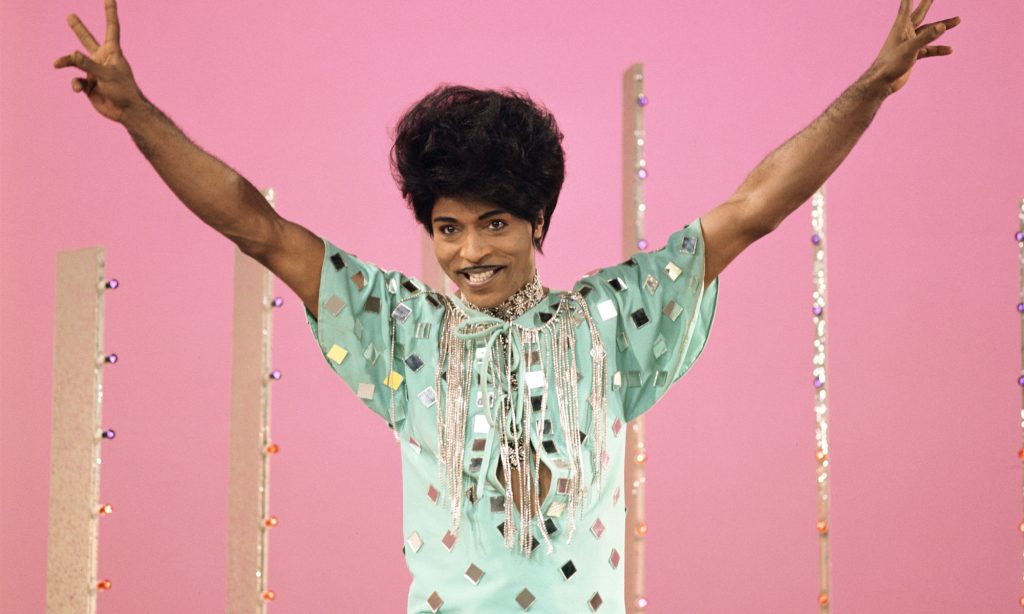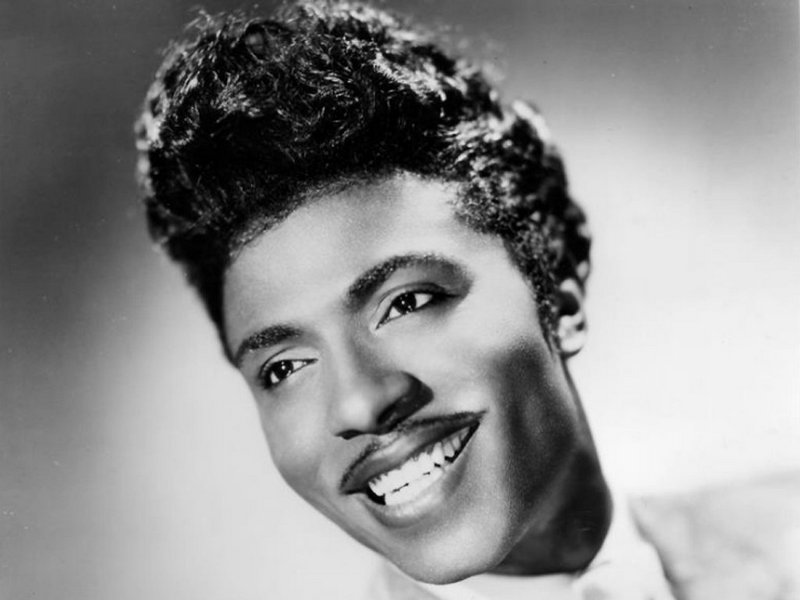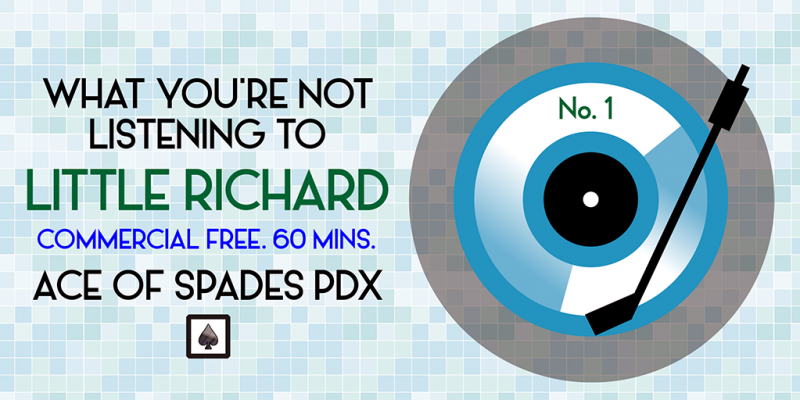Podcast: Play in new window | Download | Embed
There are few irrefutable truths in Rock and Roll. One of those that truly cannot be challenged is the fact that pretty much every single piece of music considered “Rock” comes down to two very distinct talents, both of whom got their big break in 1955, a full six months before the arrival of Elvis on the national scene. The first is Chuck Berry, who was Rock and Roll’s original guitar innovator and storyteller. The other is Rock and Roll’s first great shouter and truly electrifying performer, Little Richard, who turned 86 last December.

This was no small feat in the United States, which had only desegregated schools officially a year prior and Rock and Roll was the first time many people, particularly white teenagers, were exposed to Black culture. A very public media war was raging against the new music, and this “outrage” from the old, white establishment carried less than subtle racist overtones.
“Black people lived right by the railroad tracks, and the train would shake their houses at night. I would hear it as a boy, and I thought: I’m gonna make a song that sounds like that.”
– Little Richard
The person who would become the Prettiest Man in the Rock and Roll Hall of Fame (and one of its inaugural inductees) was born Richard Penniman. He was one of 12 children born in what was then the deep, segregated South. After his father’s murder, Little Richard desperately wished to become a big star to help support his family. He had been given his first taste of fame after briefly being mentored by one of gospel’s greatest talents, Sister Rosetta Tharpe. After recording for several years with no success, he was working as a dishwasher and janitor at a Greyhound bus station when he wrote the the initial words to what would become, according to the Library of Congress, “unique vocalizing over the irresistible beat [that] announced a new era in music”. That track was “Tutti Frutti” in 1955, his first single for Los Angeles-based Specialty Records.

In just two short years, however, he saw what he believed to be a sign from God and left the business immediately to become a preacher and Gospel singer. He would return to Rock and Roll just in time to ride the 1950’s wave of Rock and Roll nostalgia, which, starting in the late 1960’s that had taken the country by storm. It was during the time that Little Richard played to his biggest ever crowds and reminded everyone who the first real Rock Star was, is, and always would be.
First Part
- Tutti Frutti, 1955, Specialty Single 561 A-side
- Keep A-Knockin, 1957, Specialty single 611 A-side
- Can’t Believe You Wanna Leave, 1957, Specialty 611 Single B-side
- I Need Love, 1966, Okeh Single 4-7262 A-Side
- Bama Lama Lama Loo, 1964, Specialty 692 Single A-side
- Slippin’ and Slidin’, 1956, Specialty Single 572 B-side
- Get Rich Quick, 1952, RCA Victor single 20/47-4582 A-side
- Royal Crown Hairdressing, 1956, WLAC commercial
- Long Tall Sally, 1956, Specialty single 572 A-side
- Baby, 1955, demo recording
Second Part
- Get Down With It, 1967, CBS (UK only) single 8116 A-side
- Interview Excerpt (with Specialty Records owner Art Rupe), 2011
- The Girl Can’t Help It, 1956, Specialty single 591 A-side
- Nuki Suki, 1972, Reprise single REP1130 (B-side to Mockingbird Sally)
- Jenny Jenny, 1957, Specialty Single 606 A-Side
- Good Golly Miss Molly, 1958, Specialty single 624 A-side
- Lucille, 1957, Specialty single 598 A-side
Finale
- Peace In The Valley, 1961, album track from The King of The Gospel Singers, Mercury SR-60656 (with the Quincy Jones Orchestra and the Howard Roberts Chorale) also repacked as It’s Real
Love to you all.
Ben “Bear” Brown Jr.
Host, Producer, Audio Engineer and Writer
“Copyright Disclaimer Under Section 107 of the Copyright Act 1976, allowance is made for ‘fair use’ for purposes such as criticism, comment, news reporting, teaching, scholarship, and research. Fair use is a use permitted by copyright statute that might otherwise be infringing. Non-profit, educational or personal use tips the balance in favor of fair use.”
